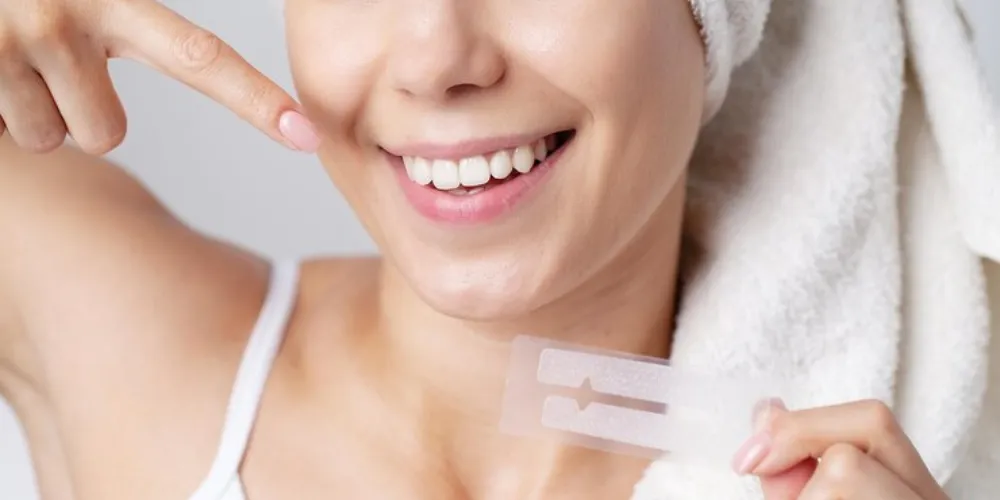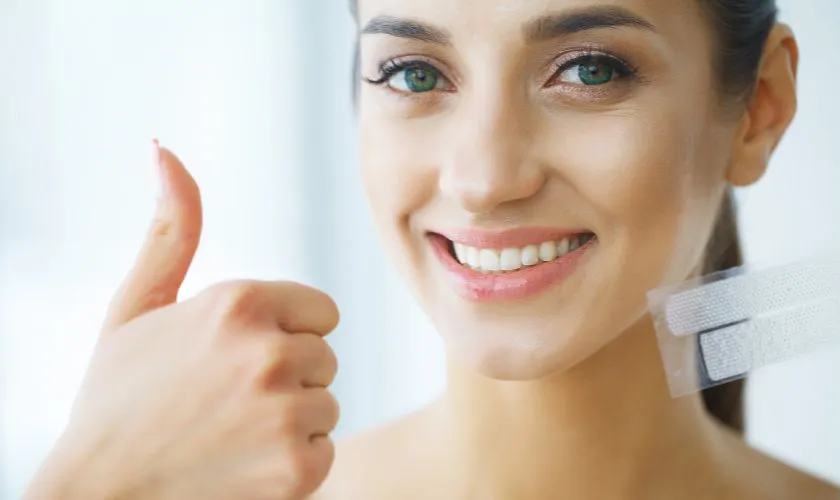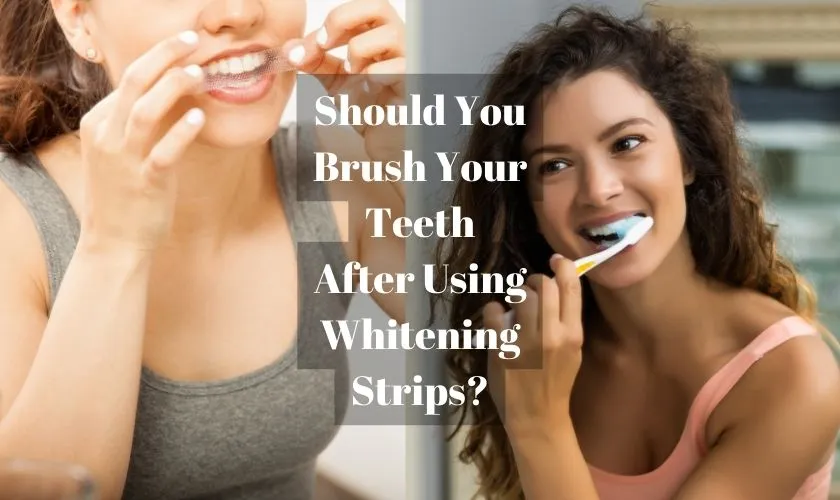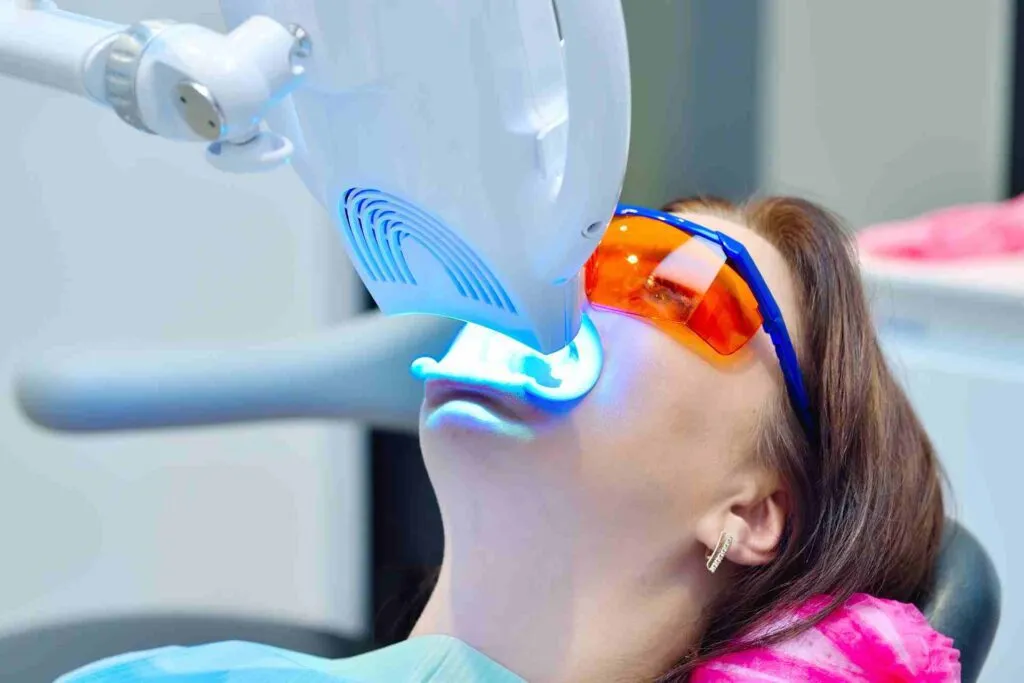Whitening Strips Brush or Not? The Essentials
The question of whether to brush after using whitening strips is a common one, and the answer isn’t always straightforward. Understanding the nuances of this question can significantly impact the effectiveness of your teeth whitening journey and protect your oral health. This guide explores the best practices to ensure you achieve the desired results while maintaining a healthy mouth. The goal is to provide clear, actionable advice to help you navigate the world of teeth whitening with confidence.
Understanding Whitening Strips Application
Whitening strips work by applying a thin layer of hydrogen peroxide or other bleaching agents directly onto your teeth. These agents penetrate the enamel to break down stain molecules, resulting in a brighter smile. The effectiveness of the strips depends on several factors, including the concentration of the active ingredient, the duration of application, and the frequency of use. It is crucial to follow the manufacturer’s instructions carefully to ensure safety and efficacy. Additionally, understanding the process helps in making informed decisions about post-application care, such as brushing.
The Role of Brushing in Oral Hygiene

Brushing is a cornerstone of good oral hygiene. It removes plaque, food particles, and bacteria that contribute to cavities, gum disease, and bad breath. The act of brushing also stimulates the gums, promoting healthy blood flow and tissue maintenance. Using fluoride toothpaste further strengthens the enamel, making teeth more resistant to decay. While brushing is essential, the timing and technique must be adapted when using whitening strips to maximize their benefits and protect your teeth. Therefore, brushing too soon after applying a whitening strip can interfere with the process.
Why You Might Hesitate to Brush After Whitening Strips
The primary concern about brushing immediately after using whitening strips is the potential to remove the active whitening agents before they have had sufficient time to work. Furthermore, brushing too aggressively can also irritate the gums or wear down the enamel, especially if the teeth are temporarily more sensitive. The abrasive action of toothpaste, combined with the chemicals from the strips, can sometimes lead to undesired effects such as increased sensitivity or uneven whitening. Therefore, it is important to consider all factors before determining when and how to brush your teeth when using whitening strips.
Tip 1 Wait Before Brushing
Generally, it is recommended to wait for at least 30 minutes to an hour after removing the whitening strips before brushing your teeth. This waiting period allows the whitening agents to fully penetrate the enamel and perform their function. During this time, avoid eating or drinking anything other than water. Waiting ensures the whitening process is not disrupted and allows the teeth to re-mineralize slightly, which helps reduce sensitivity. This simple adjustment in your routine can significantly impact the effectiveness of your whitening treatment.
Tip 2 Consider the Product

Different whitening strips may have different recommendations. Always read and follow the manufacturer’s instructions carefully. Some products might suggest brushing before application to remove any surface debris, while others advise against brushing immediately after. Check the label or packaging for specific guidance. If the instructions are unclear, consult your dentist for personalized advice based on the product’s active ingredients and your oral health condition. This approach ensures that you are using the product most effectively and safely.
Tip 3 Gentle Brushing Techniques
When you do brush after using whitening strips, use a soft-bristled toothbrush and gentle, circular motions. Avoid scrubbing aggressively, as this can damage the enamel and irritate your gums. Apply minimal pressure to prevent abrasion. Consider using a toothpaste designed for sensitive teeth, which contains ingredients to soothe the gums and protect the enamel. This careful approach minimizes any potential harm while effectively cleaning your teeth, maintaining oral health, and prolonging the effects of the whitening treatment.
Tip 4 Enhance Your Results
To enhance your results, consider other oral hygiene practices that complement the use of whitening strips. This includes regular flossing to remove plaque and food particles from between your teeth, where the strips can’t reach. Using a fluoride mouthwash can also help strengthen the enamel and reduce sensitivity. Staying hydrated by drinking plenty of water helps maintain saliva production, which naturally cleanses your mouth. These additional steps can improve your overall oral health and maximize the effectiveness of your teeth whitening efforts.
Tip 5 Consult Your Dentist

For personalized advice, always consult your dentist. They can assess your oral health, determine if whitening strips are suitable for you, and offer tailored recommendations based on your specific needs. Your dentist can also provide professional teeth whitening treatments and guidance on how to use over-the-counter products safely and effectively. Regular dental check-ups and cleanings ensure that your teeth remain healthy, and any potential problems are addressed promptly. A professional’s insight is invaluable in achieving a brighter, healthier smile.
Alternative Ways to Maintain Oral Hygiene
If you are concerned about brushing after whitening strips, explore alternative ways to maintain oral hygiene. This could include gently rinsing your mouth with water or using an alcohol-free mouthwash after removing the strips. Chewing sugar-free gum can stimulate saliva production, which helps to wash away food particles and neutralize acids. By adopting these methods, you can keep your mouth clean and fresh while still allowing the whitening agents to work effectively. The key is to maintain a consistent oral hygiene routine that works best for you.
Mouthwash as a Whitening Strips Complement
Using mouthwash can be a beneficial part of your oral hygiene routine when using whitening strips. Choose an alcohol-free mouthwash to avoid irritating the teeth and gums. It can help remove debris and freshen your breath without potentially interfering with the whitening process. Wait for at least 30 minutes after removing the strips before using mouthwash, and follow the product instructions. Mouthwash can be a convenient way to maintain a clean mouth and contribute to the success of your teeth whitening treatment, and it is a great addition to your daily routine.
Flossing for Optimal Oral Health

Flossing is a critical part of maintaining optimal oral health, and it should be done daily, ideally before brushing. It removes plaque and food particles from between the teeth and along the gumline, areas that a toothbrush often can’t reach. Flossing helps prevent cavities and gum disease, thereby improving overall dental health. When combined with teeth whitening strips, flossing ensures that the entire surface of your teeth is clean, leading to a more uniform and brighter smile. Consistent flossing contributes significantly to the long-term health and appearance of your teeth.
In conclusion, the key takeaway is to be patient and mindful when incorporating brushing into your whitening strip routine. By waiting an appropriate amount of time, using gentle techniques, and consulting your dentist, you can achieve a brighter smile while maintaining excellent oral health. Prioritizing the health of your teeth and gums is the foundation for any successful teeth whitening journey. By following these tips, you are well on your way to achieving the dazzling results you desire.
